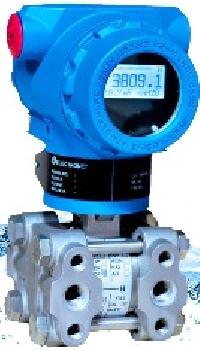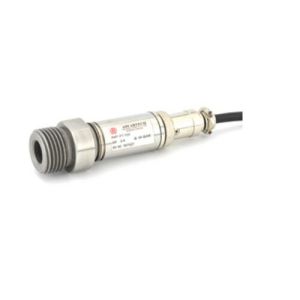
Differential Pressure Transducers
10,000 - 1,000,000 Per Piece
10 Piece (MOQ)
Differential pressure transducers, while similar to standard pressure transmitters, focus on measuring the difference in pressure between two points in a fluid or gas system. They don't provide absolute pressure readings but rather the variation between two pressures. Here's a breakdown of their typical specifications: General Specifications · Differential Pressure Range: This specifies the range of pressure difference the transducer can measure (e.g., ±100 Pa, -10 to +10 bar). · Accuracy: Expressed as a percentage of full scale (%FS) similar to standard transmitters. Typical accuracy for good quality models is ±0.5%FS to ±2%FS. · Output Signal: The most common output signal is a 4-20mA current loop, but 0-5V or 0-10V voltage outputs can also be found. · Supply Voltage: The voltage required to power the transducer (typically 24VDC). · Performance Specifications · Temperature Limits: The operating temperature range the transducer can withstand. · Static Pressure Rating: The maximum pressure each individual input port can handle without damage (important because differential transducers have two pressure inputs). This can be higher than the differential pressure range. · Proof Pressure: The maximum overall pressure the transducer can withstand without permanent damage (typically 1.5 to 2 times the upper limit of the differential pressure range). · Burst Pressure: The pressure that will cause catastrophic failure (typically 4 times the upper limit of the differential pressure range). · Response Time: The time it takes for the output to respond to a change in pressure difference (usually in milliseconds). Environmental Specifications · Ingress Protection (IP rating): Similar to other transmitters, this rating indicates the level of protection against dust and water ingress (e.g., IP65 for dust tight and water jets). · Material of Construction: The materials used in wetted parts (those coming into contact with the process fluid) are crucial. Common materials include stainless steel, Hastelloy C, and Monel. Additional Features · Media Compatibility: The type of fluids or gases the transducer is compatible with, considering factors like corrosiveness. · Communication Protocol (Optional): Some advanced models offer communication protocols like HART for remote configuration and diagnostics. · Display (Optional): Some transducers may have a built-in display for local pressure difference reading. · Calibration: Calibration is necessary to ensure accuracy. Some models offer features like zero and span adjustments for easier calibration. Factors to Consider When Selecting a Differential Pressure Transducer · Process Connections: The type of fitting used for connecting the transducer to the two pressure points (e.g., NPT, flange). · Electrical Connections: The type of electrical connector for power and output signal. · Fluid Compatibility: Ensure the materials and media compatibility specifications match the fluids in your application. By understanding these differential pressure transducer specifications and additional factors, you can select a suitable model for your specific application that requires measuring pressure differences in liquids or gases.

Pressure Transducer
4,800 Per Ounce
Best Deals from Pressure Transducers

Submersible Pressure Transducers
5,000 Per Piece
10 Piece (MOQ)

digital pressure transducer
Get Price Quote
digital pressure transducer, Digital Liquid Level Controller

Pressure Transducer
Get Price Quote
Pressure Transducer, Pressure Transmitter, Electrical Tester

Pressure Transducers
Get Price Quote
Pressure Transducers, Construction Machinery, weighing pads

Setra Model 264 Differential Pressure Transducer
Get Price Quote
Setra Model 264 Differential Pressure Transducer

Pressure Transducer For Industrial Application
Get Price Quote
Pressure Transducer For Industrial Application, Festo Rodless Cylinders